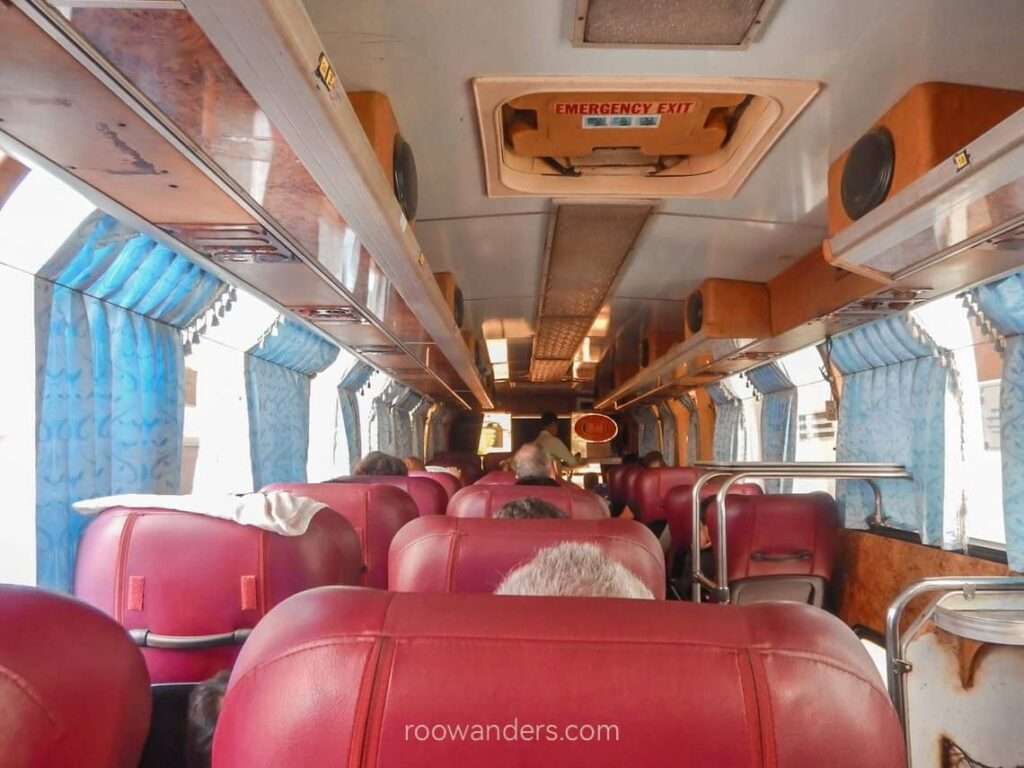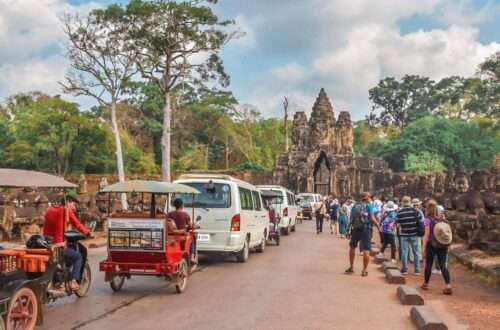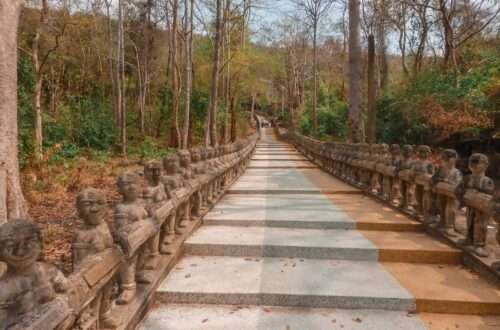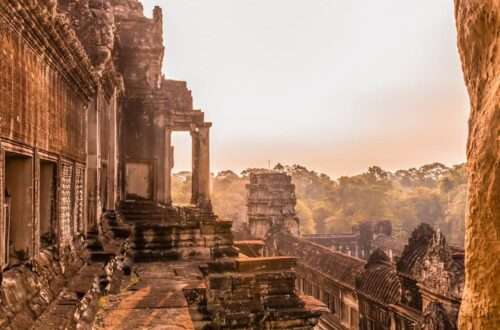
Sambor Prei Kuk | The Latest UNESCO Site in Cambodia
A World Heritage site was recently added in Cambodia in July 2017.
Everyone heard about Angkor Wat, and to an extent, Prasat Preah Vihear, the disputed temple on the Thai-Cambodian border. But how about this latest addition?
Hidden within the jungle 25 km from Kompong Thom sits the pre-Angkorian site – Sambor Prei Kuk.

This post may be updated periodically.
The Newest Addition
Sambor Prei Kuk, ‘the temple in the richness of the forest’ in Khmer, was once Ishanapura, the capital of the Chenla Empire, in the late 6th to early 7th century.
Unlike the lone grandeur of the magnificent Angkor Wat or that of Prasat Preah Vihear, Sambor Prei Kuk features more than a hundred small edifices scattered across the jungle, somewhat similar to the dispersed temples in the Angkor Complex but on a smaller scale.
The more significant temples cluster within three groups – ‘N’ north group, ‘S’ south group’ and ‘C’ central group.
Group ‘N’, also known as Prasat Sambor, is the closest to the main entrance. It is dedicated to the incarnations of Shiva.
The other two groups are dedicated to Shiva himself.
Group ‘S’, also known as Prasat Yeai Poeun, is the oldest of the clusters and sits further in the forest.
Group ‘C’, also known as Prasat Thor, is the largest of the complex with two impressive stone lion carvings.
What makes Sambor Prei Kuk unique are some of its octagonal-shaped temples that you can never find in the Angkor complex. Those intricate designs have lasted longer than Angkor Wat!
The art and architecture here are the precedent for other parts of the region and set the ground for the individualistic style of the Khmer Empire.
Getting There
The best way to reach Sambor Prei Kuk is through a chartered tuk-tuk from Kompong Thom.
The one-way journey took an hour and cost us USD 15 for the return trip.
And how do you reach Kompong Thom?


For those who have taken the bus between Siem Reap and Phnom Penh, you would have been to Kompong Thom. The sleepy town sits between the two cities, making it a perfect stop to break the day-long journey for a meal. The bus would usually park outside Hotel Arunras. A restaurant on its ground floor sells simple stir-frys and noodles. We had Cambodian sandwiches – Num Pang – for takeaways. Num Pang looks like the Vietnamese Banh Mi.
Visiting Hours, Tickets and Guides
Sambor Prei Kuk opens from 7 am to 5 pm.
The ticket used to cost USD 3 when we were there in Mar 2018, but the price increased to 10 USD after June 2018 to reflect its new status as a UNESCO site. The new price is in line with the ticket prices charged at most isolated temples like Koh Ker and the other UNESCO site Prasat Preah Vihear.
If you are thinking of visiting Sambor Prei Kuk on the same day as your departure from Phnom Penh or Siem Reap, you must catch the earliest possible morning buses. It will be afternoon by the time you reach Kompong Thom. Factor in another hour of tuk-tuk ride to the park and that puts it as just enough time to cover the clusters before the park closes at 5 pm.


Alternatively, arrange to have it the next morning and visit the spooky hill Santuk that day instead.
We hired a guide on the spot at Sambor Prei Kuk for USD 6.
Accommodation
We stayed in Santepheap Guesthouse, which has a lovely host who can speak basic English and found us a tuk-tuk to Sambor Prei Kuk.
The Visit
We paid for our tickets at the booth by the entrance and were welcomed by a guide wearing a yellow uniform shirt with a green tag.
“The word ‘Kampuchea’ started from the time when Sambor Prei Kuk emerged”
Tuk-tuks were not allowed on the site but not the motorcycles. We saw a few cruising along the road between the temples in the late afternoon, churning puffs of red dust clouds as they went.


Of the hundreds of temples in Sambor Prei Kuk, only ten were permitted to enter.
Almost all the temples we visited had missing Linga, the male fertility symbol, and broken Yoni, the corresponding female symbol.
Holy water was made by pouring water from a nearby well over the linga and collecting this water from the yoni.




Ending
We enjoyed our visit, largely due to the impressive guide and the lack of crowds in the park. What a contrast it was to the temples of the Angkor complex. We were the only handful of foreigners in the park on that late afternoon in March 2018.
All the UNESCO sites in Cambodia are very different and should be visited if you have the opportunity.
Sambor Prei Kuk has smaller intricate remains scattered within the forest. Prasat Preah Vihear is huge with several chambers and sits atop the mountain overlooking the border that separates Thailand and Cambodia. Angkor Wat is taller with many libraries, rooms and stairs.








